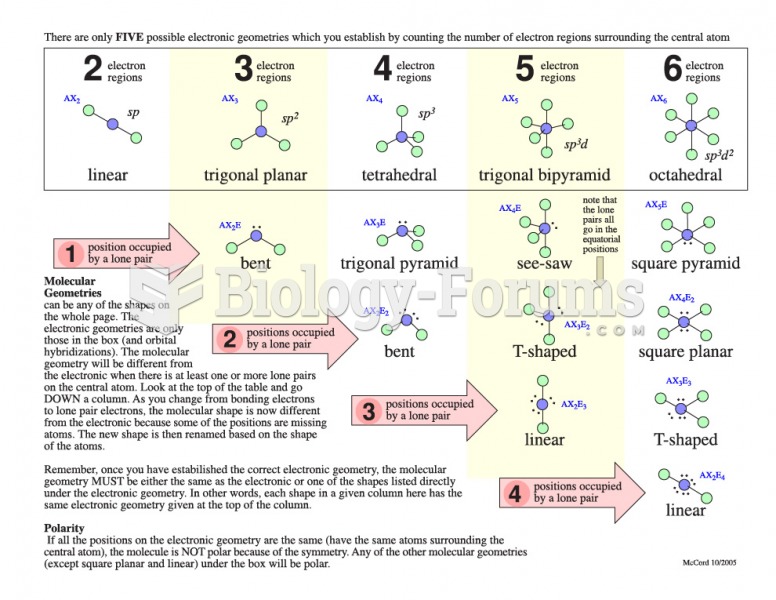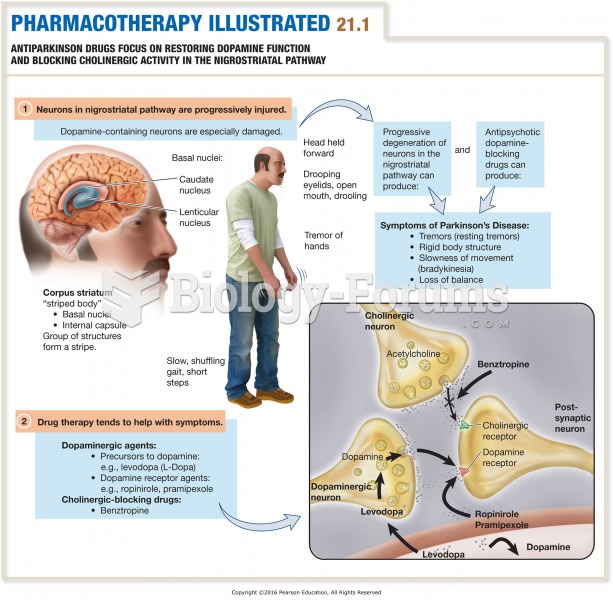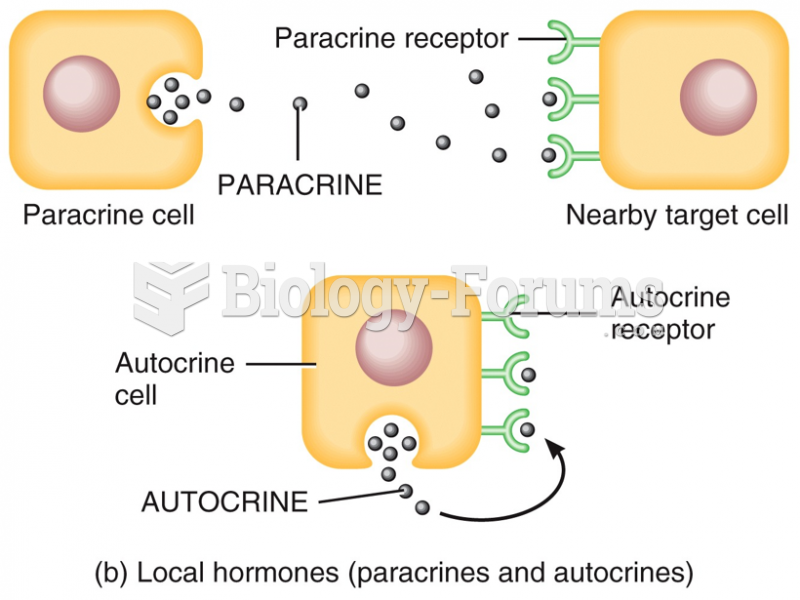|
|
|
In 1844, Charles Goodyear obtained the first patent for a rubber condom.
The heart is located in the center of the chest, with part of it tipped slightly so that it taps against the left side of the chest.
In 2010, opiate painkllers, such as morphine, OxyContin®, and Vicodin®, were tied to almost 60% of drug overdose deaths.
Bacteria have been found alive in a lake buried one half mile under ice in Antarctica.
An identified risk factor for osteoporosis is the intake of excessive amounts of vitamin A. Dietary intake of approximately double the recommended daily amount of vitamin A, by women, has been shown to reduce bone mineral density and increase the chances for hip fractures compared with women who consumed the recommended daily amount (or less) of vitamin A.







